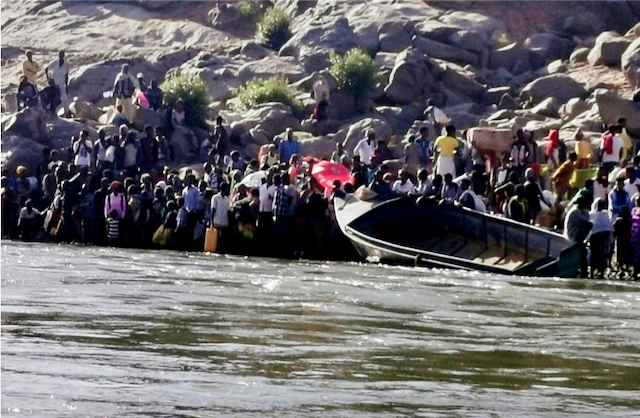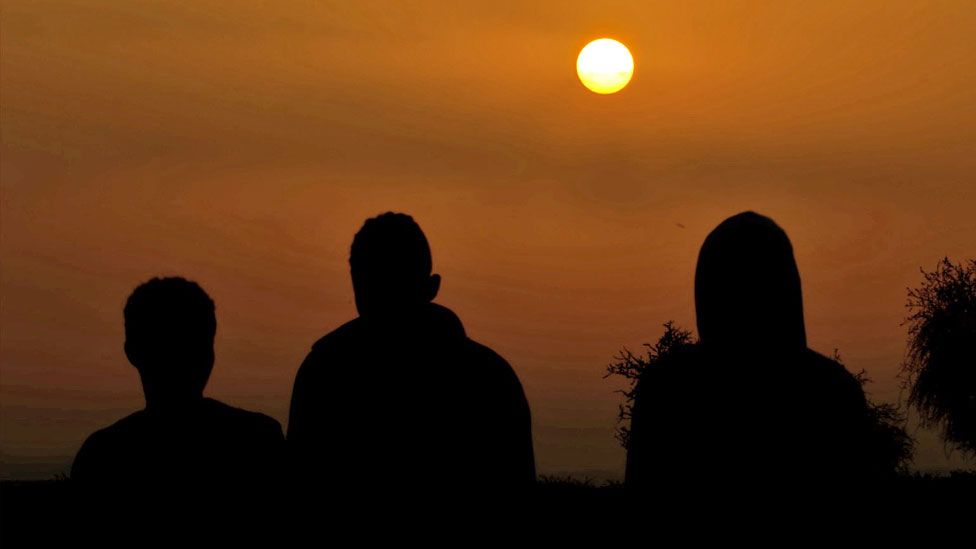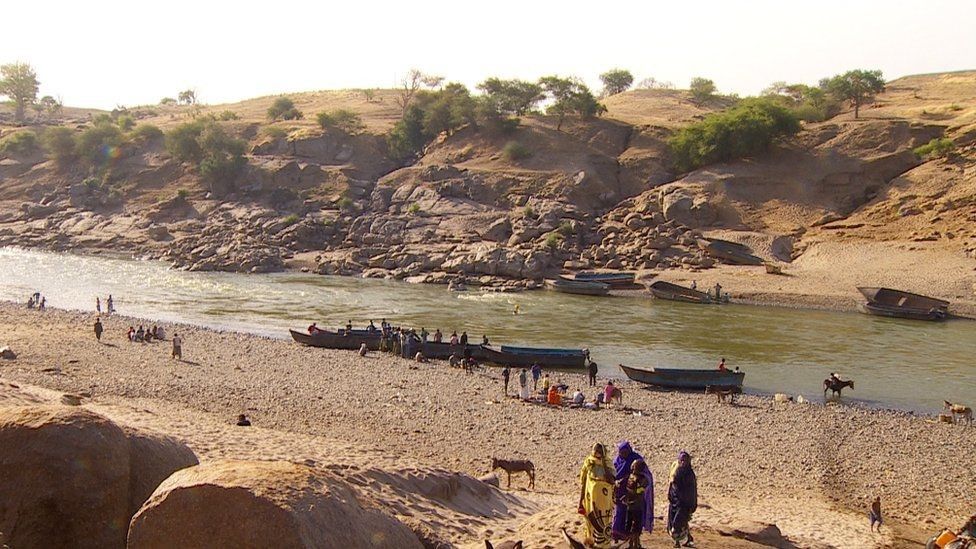Source: Amnesty International
Police in Addis Ababa have arbitrarily arrested and detained dozens of Tigrayans without due process, following the recapture of the Tigray region’s capital, Mekelle, by forces from the Tigray People’s Liberation Front (TPLF) that also calls itself Tigray Defence Forces (TDF) on 28 June, Amnesty International said today. The arrests appear to be ethnically motivated, with former detainees, witnesses and lawyers describing how police checked identity documents before arresting people and taking them to detention centres.
“Former detainees told us that police stations are filled with people speaking Tigrinya, and that authorities had conducted sweeping mass arrests of Tigrayans”
Deprose Muchena, Director for East and Southern Africa
“Following the withdrawal of the Ethiopian National Defense Force from parts of Tigray and the announcement of a unilateral ceasefire by the Federal government on 28 June, for the last two weeks Tigrayans in Addis Ababa have been arbitrarily arrested and detained. Former detainees told us that police stations are filled with people speaking Tigrinya, and that authorities had conducted sweeping mass arrests of Tigrayans,” said Deprose Muchena, Amnesty International’s Director for East and Southern Africa.
“Amnesty International urges the Ethiopian government to end this wave of arbitrary arrests, and to ensure that all detainees are either promptly charged with internationally recognized crimes and given fair trials, or immediately and unconditionally released. The government must also inform families of the whereabouts of those detained and ensure that they have access to lawyers and their relatives.”
While some people have been released on bail, approximately hundreds of others remain in detention, and their whereabouts unknown. Amnesty International is not aware of any internationally recognizable criminal charges against those still in detention who were arrested in these cases documented by the organization.
Ethiopian law requires police to present detainees in court within 48 hours of arrest to review the grounds for arrest. Promptly bringing detainees before a judicial authority is an important safeguard against torture, ill-treatment and enforced disappearance.
Beaten, harassed, arrested
Amnesty International remotely interviewed 14 people in Addis Ababa, including former detainees, eyewitnesses to arrests, and relatives and lawyers of those still in detention.
One man, who was arrested in the Merkato area on Friday 2 July, told the organization that police raided his snooker game business at around 7pm. They began to harass and beat customers and employees and demanded to see their identity documents, before taking five people, all ethnic Tigrayans, to the nearby Woreda 6 police station. Identification cards in Ethiopia identify the ethnicity of the holder. The shopkeeper, who was among those arrested, said:
“They kept us on the open air and it was raining the whole night. We also stayed there the next day on Saturday. More people of Tigrayan origin joined us during the daytime on Saturday. We were 26 Tigrayans arrested in the station that day.”
The Ethiopian government to end this wave of arbitrary arrests, and to ensure that all detainees are either promptly charged with internationally recognized crimes and given fair trials, or immediately and unconditionally released
Deprose Muchena
Nineteen people were released the next day – some after presenting a bond – but the rest were taken to Awash Arba area in Afar Region, 240 kilometers east of Addis Ababa, according to the people Amnesty International has interviewed. The shopkeeper was released on Saturday evening, only to learn that his brother was among those being held at Awash Sebat. He said:
“The next day I was told my brother is also arrested. He called us from Awash Sebat using a phone line of another person. He told us he is taken there by the police with many people. I know some of the people arrested with him.”
Tsehaye Gebre Hiwot, who works at a tyre maintenance shop near Gotera, was arrested by police together with a relative, Haile Girmay, on 3 July. A family member told Amnesty International that she had visited Tsehaye Gebre Hiwot in the nearby police station.
She said: “When I visited him, I saw many other Tigrayan broomsticks and mopper vendors [a business traditionally associated with people of Tigrayan origin] arrested there. They were all speaking in Tigrinya. I don’t know if they are released or taken with him.”
A further nine witnesses told Amnesty International that they had seen dozens of Tigrayans detained in Tekle Haimanot – 5th Police Station, Gerji, Federal Police Remand Centre, and Merkato police stations when visiting detained friends and relatives. One man, who said five of his friends had been arrested in a raid on a dormitory hall on 2 July in Tekle Haimanot, said he saw about 50 Tigrayans in the 5th police station when he visited on 3 July.
Amnesty International also heard of similar pattern of arbitrary arrests targeting Tigrayan residents in Awash Sebat, a town in Afar Region 200 kilometres to the east of Addis Ababa. One witness told Amnesty International that five Tigrayan business owners in the town, including her husband, were arrested on 3 July. She said:
“He and many other Tigrayans in the town were arrested that day. They stayed in the police station of the Federal Police until 7 July before they were transferred to Awash Arba Prison at a place called Berta. They were taken to a court in Awash Arba on 7 July and the court remanded them until 19 July. Then the police took them to the prison. The prison is around 35 kilometers away from Awash Sebat. We visit and deliver them food and clothes in the prison.”
Activists and journalists targeted
Tsegaze’ab Kidanu is an Tigrayan living in Addis Ababa, who has been coordinating humanitarian assistance for people affected by the conflict in Tigray. He is also a volunteer managing media relations for an association called Mahbere Kidus Yared Zeorthodox Tewahido Tigray. On 1 July, a day before his association released a statement on the human rights situation in Tigray, he was arrested at his home.
Tsegaze’ab’s family and lawyer visited him at the Federal Police Remand Centre on 2 and 3 July, but when they returned on 4 July he was not there. According to Tsegaze’ab’s lawyer, they later heard from another detainee that he had been taken to Awash Arba. His lawyer was also never informed of charges brought against Tsegaze’ab.
The lawyer also shared with Amnesty International the names of 24 Tigrayans who were arrested from various neighbourhoods of Addis Ababa, including 22 Mazoria and Tekle Haimanot, between 30 June and 8 July. The lawyer told Amnesty International that one detainee, released on bail on 5 July, was charged of having ‘links with TPLF (the Tigray People’s Liberation Front)’ which is designated as a terrorist group by the Ethiopian government.
Authorities must also ensure that all detainees are protected against torture and other ill-treatment
Deprose Muchena
Journalists and media workers who have been reporting on the situation in Tigray have also been detained without due process. On 30 June, police arrested 11 journalists and media workers for Awlo Media and Ethio Forum, You Tube based media who have been covering the conflict and the human rights situation in Tigray, along with their lawyer. A lawyer and family members interviewed by Amnesty International said that they were able to visit the detainees on 1 July, but since 2 July their whereabouts are unknown and they also have no information whether the detainees have been charged with any crime or not. A relative of one detainee said:
“On Friday [2 July], the police told us that they released them early in the morning around 6 pm. But none of them came to their house or called us. When we asked them repeatedly, the police said, we[police] don’t know where they are, don’t ever come again’. We have been looking for them since then.”
“Ethiopian authorities must reveal the whereabouts of detainees to their families and lawyers. Not disclosing the fate or whereabouts of detainees is committing the crime of enforced disappearance. Authorities must also ensure that all detainees are protected against torture and other ill-treatment.” said Deprose Muchena.





 image captionThe River Sittet marks the border between Ethiopia and Sudan
image captionThe River Sittet marks the border between Ethiopia and Sudan


 This book – as relevant today as it was in 1993 when it was first written – is by one of the few outsiders who can claim to really know those who fought for Eritrea’s freedom.
This book – as relevant today as it was in 1993 when it was first written – is by one of the few outsiders who can claim to really know those who fought for Eritrea’s freedom.
















